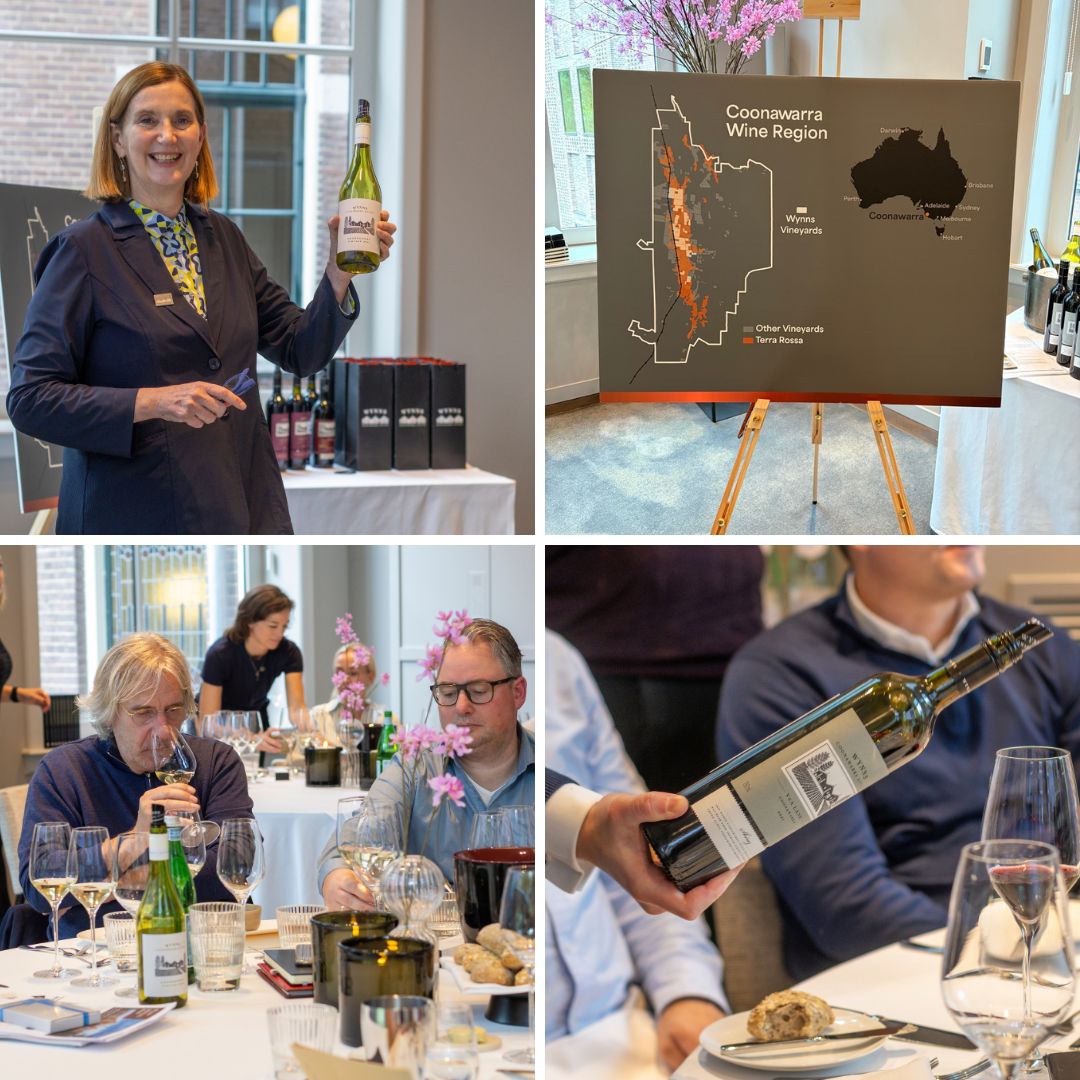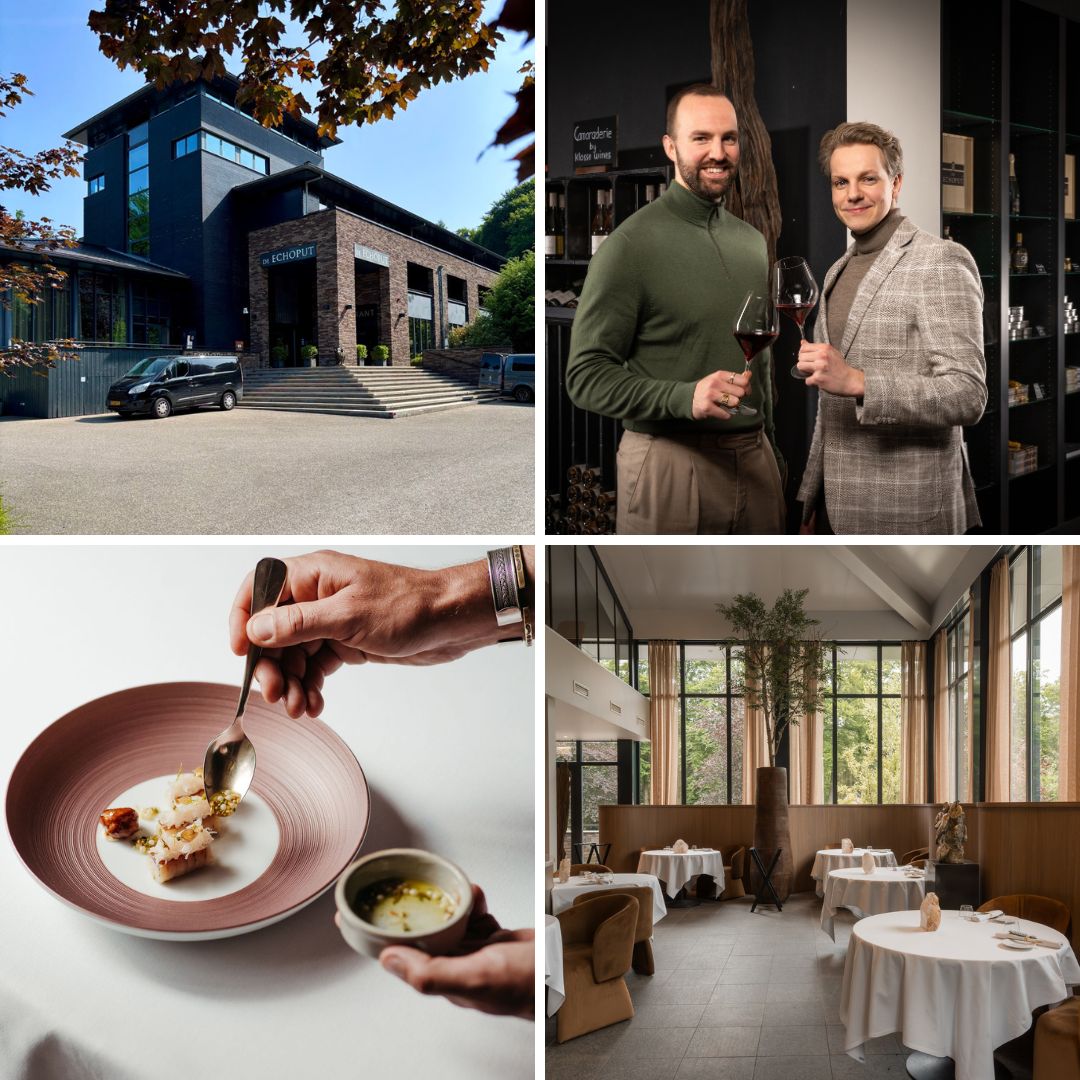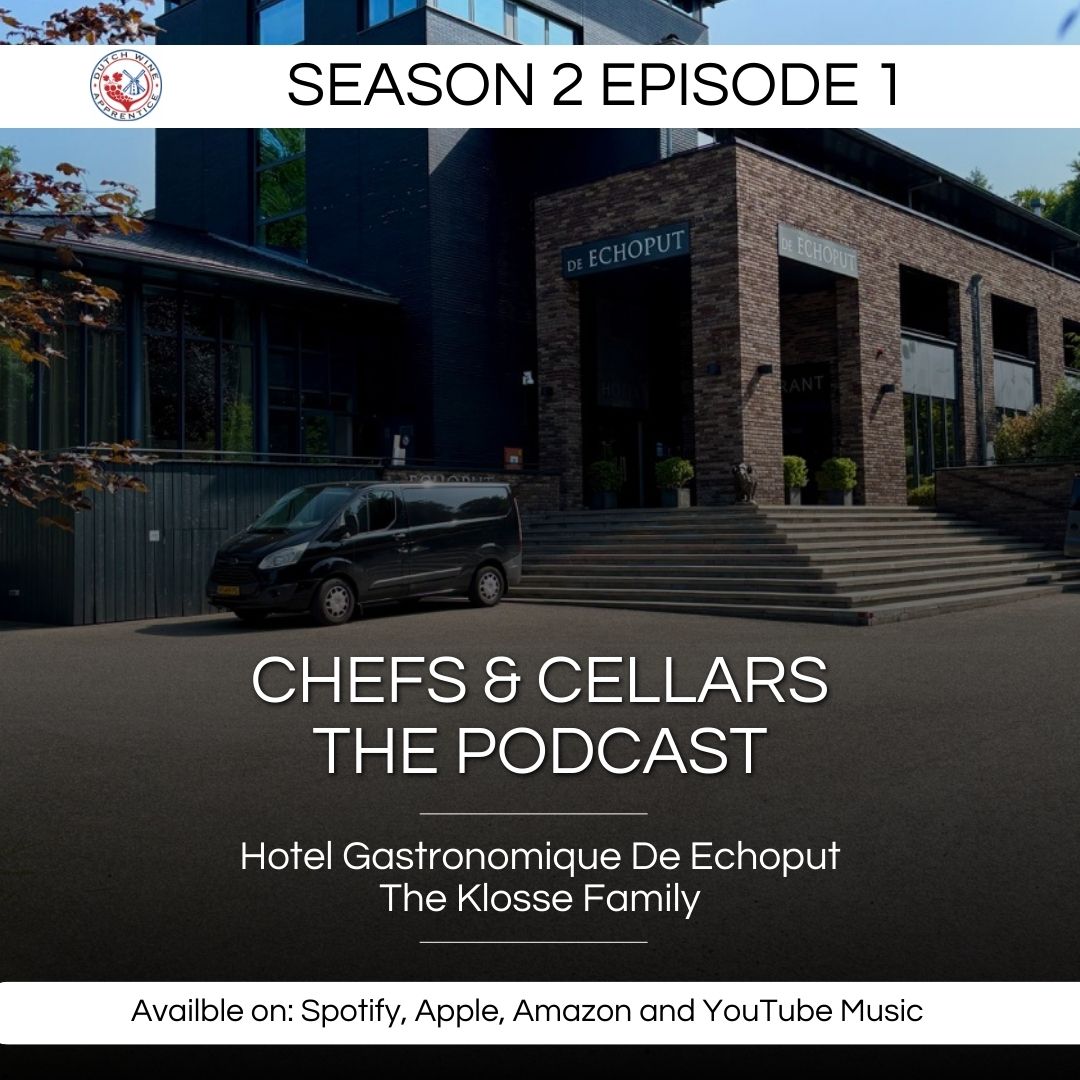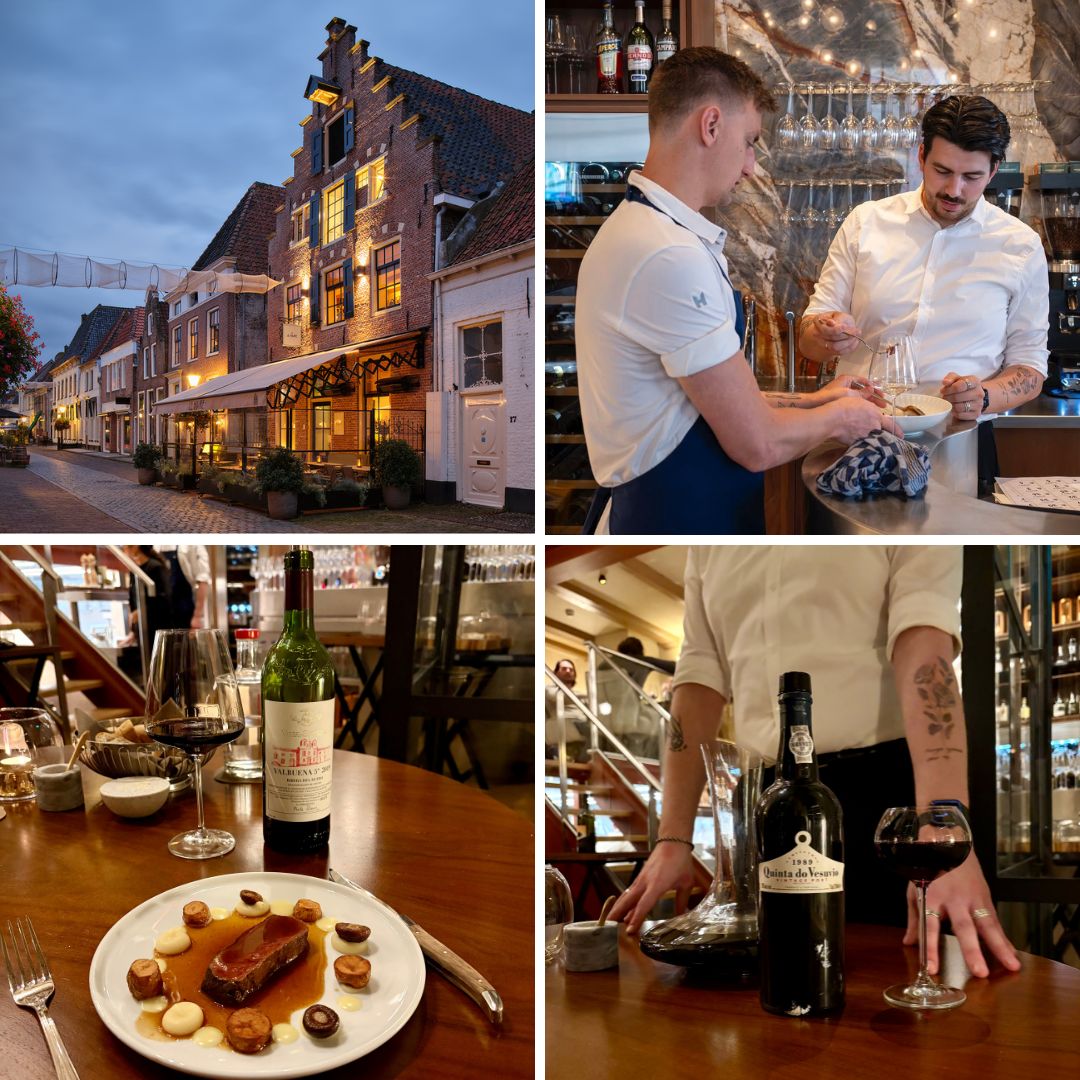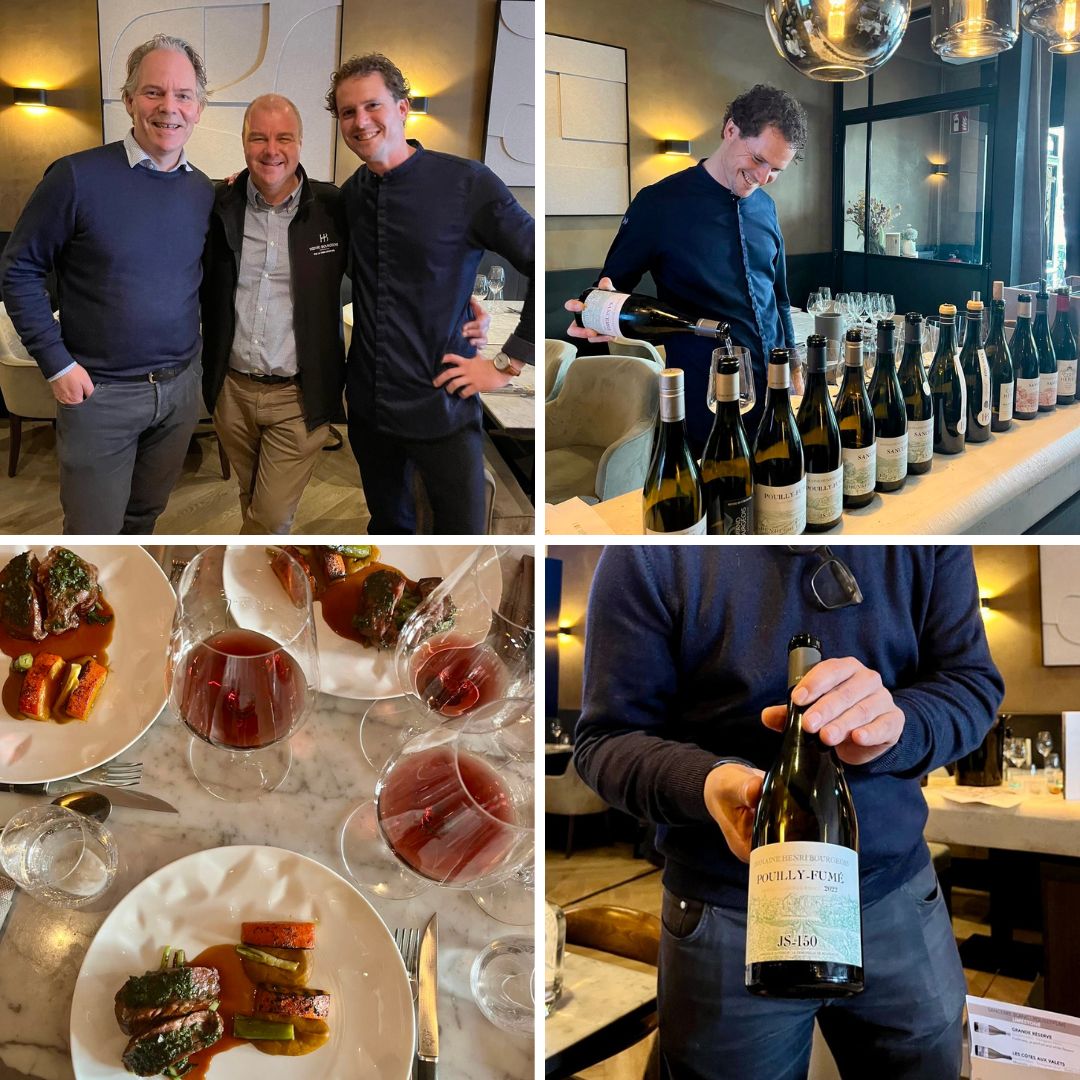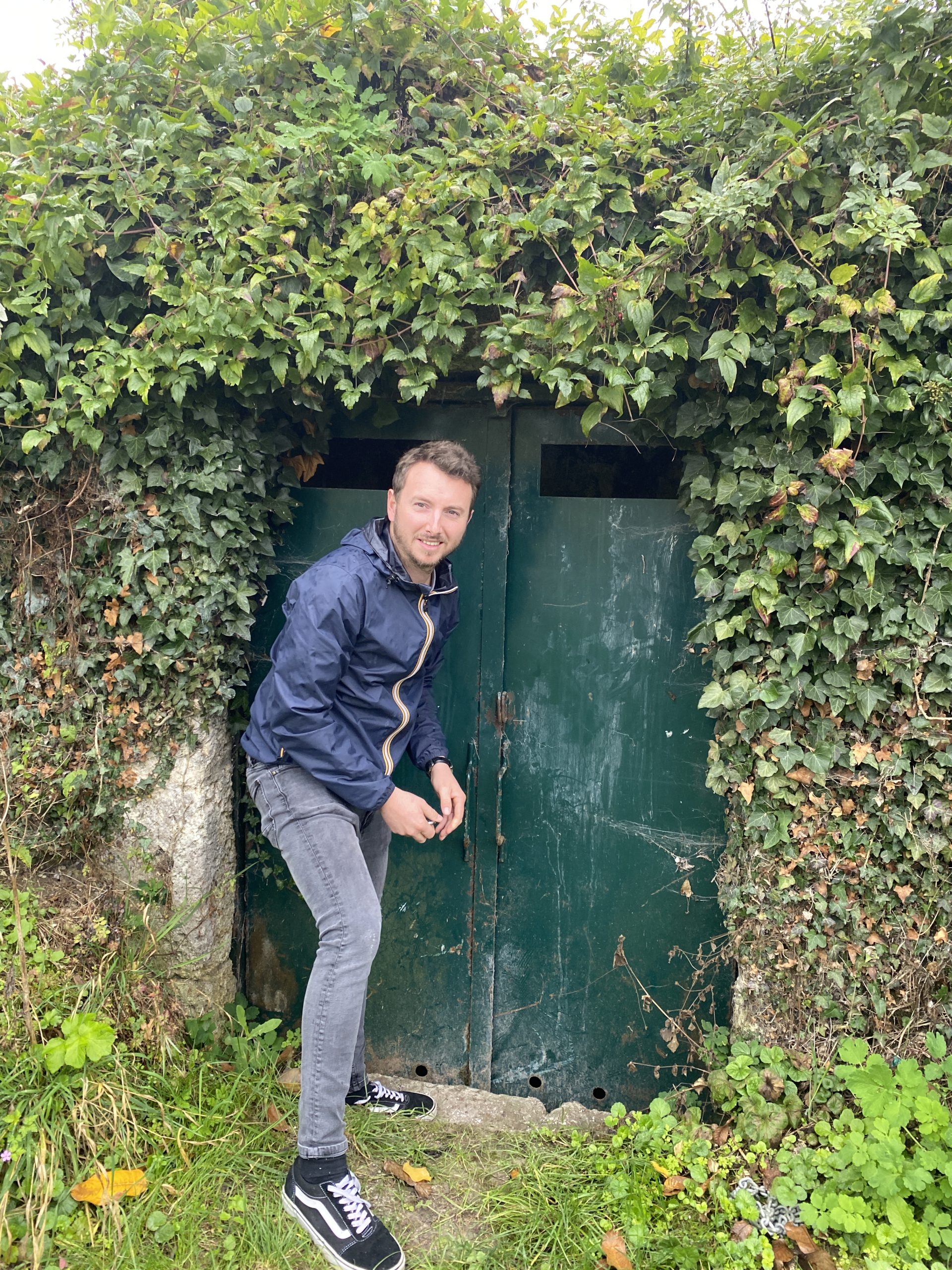Ad Bibendum Anniversary Tasting.
On Sunday the 27th of November we attended the 25-year anniversary tasting by Ad Bibendum in Sint-Truiden, Belgium. Ad Bibendum is known as one of the larger importers of Belgium, with stores in Sint Truiden and Antwerp. Since they are 25 years in business this year they decided to organize a big multi-day tasting event at their warehouse facilities in Sint Truiden, inviting a large number of their friends and producers they represent.
Wine cases were piled up high in their huge warehouse, being Christmassy decorated. Weaving around to find the next producer’s table through the boxes was like a fascinating labyrinth of wines. Amongst more than 25+ producers with 350+ bottles from 16 countries, we had a great privilege not only to taste our ‘wanted’ wines but also encountered new stars as Ad Bibendum focusses on smaller yet high-quality wineries, particularly better at introducing wines with indigenous varieties. In this article we share some stories or bottles that we are moved by the most, there was much more but we will save that for the next time!
Sei Solo – Ribera del Duero, Spain
Sei Solo is a small, high-quality winery through artisanal production based on the old vineyards of La Horra in Spain’s Ribera del Duero region. Michael Zaccagnini, who runs this winery together with his father Javier, explained how they have inquired the best way (yet which will be never ending) to produce their ideal wine. We assume that his experimental mindset comes from Michael’s background as an engineer. His story illustrating his trial and error approach, such as for the old barrel (size, years, toasted level etc.) attracted us to taste the beautiful bottles more than before. Very limited production to focus on quality. Luckily, we interviewed to his father, Javier Zaccagnini in our Cellar Talks before (season 4, episode 5), so you can learn even more about this exciting winery. You can listen to this interview in our archives here.
Sei Sol 2020 ‘EN PRIMEUR’ – 100% Tinto Fino (Tempranillo). Powerful and elegant. Ripe dark fruits with spices (cinnamon and nutmeg) and violet, chocolate, and leather on the nose. Intense and complex on the palate, structured by mouthwatering acidity and smooth yet firm tannins. High alcohols are not noticeable and well-integrated. It will have a long aging-potential.
DWA Score 95/100
Cos D’Estournel – Bordeaux, France
Cos D’Estournel. We will not have to introduce the super second growth itself in detail, which are considered to be on par with the five first growth but should discuss a huge change from sustainable perspective in the past decade. Environmental approach is a big topic in Bordeaux now. In 2014, fewer than 35% of all wineries practice form of certified approach, but this had reached 65% in 2020 and the regional counsel, CIVB targets 100% by 2030. According to Mrs. Estelle, the effort of the winery also has dramatically prompted after joining of the technical director, Dominique. Not only its grape growing options, but also the vineyard looking has seemed to be changed for the greener. It was wonderful to be able to hear so much interesting and informative stories.
Cos d’Estournel 2011 – Saint-Estèphe is in the most northerly and coolest AOC in Médoc, so known for the higher percentage of Merlot. 65% Cabernet Sauvignon, 30% Merlot, 5% Cabernet Franc wines in the beautiful drinking window, showing great structure by Cabernet, combined with the exotic aromas and fruitiness of the Merlot, with a unique elegance of Cos d’Estournel.
DWA Score: 96/100
Pagodes de Cos 2018 – The great second of Cos d’Estournel, being more approachable, opulent yet also showing complexity and intensity. Expressive black cherries, plum with exotic spice, tobacco, mushroom, earthiness, smoke notes. Structured but well-integrated. Precise and serious second wine.
DWA Score: 94/100
Poggiotondo – Tuscany, Italy
Poggiotondo. This is the family home of Alberto Antonini, a genius winemaker. After working for or consulting to many prestigious wineries such as Frescobaldi, Antinori, oversea Robert Mondavi and Au Bon Climat, he took over the family business from his father in 2001. The winery is in the southwestern part of Chianti, influenced by the sea. Poggiotondo means ‘rounded hill’, refereeing to the hill created by the uplift of soil that was at the bottom of the sea a million years ago. Mediterranean climate, calcareous soils, organic farming and authentic winemaking result in wines with great purity and viability. Although it is generally believed that “Chianti” is inevitably inferior to Chianti Classico, Alberto has shown that even Chianti can produce top-notch Tuscan wines. Poggiotondo’s DOCG Chianti is exceptional.
Chianti Riserva “Vigna del 1928” 2019 – This is Sangiovese-based field blend including Trebbiano Toscano. Very small percentage of white grapes seem to contribute to its freshness by acidity. Classic Sangiovese aromas of red cherry, spice, violet, and a hint of tobacco notes. Pure and fresh yet showing depth and complexity.
DWA Score: 92/100
Chianti Riserva “Vigna delle Conchiglie” 2019 – This is one of our favorite in this winery. 100% Sangiovese. Conchiglie means shell in Italy, refereeing soil of marine origin, calcareous with a high presence of white seashells. Dark and red cherry with delicate spiciness on the nose. Velvety texture with fresh acidity and smooth tannins, persistent long finish. Elegant.
DWA Score: 93/100
IGT Toscana Rosato delle Conchiglie – 100% Sangiovese rosé produced by short maceration. Red cherry with delicate spiciness. Refreshing acidity and smooth tannins. Color is light yet with nice body. Approachable food-friendly wine.
DWA Score: 90/100
Ossian – Rueda, Spain
Ossian Vinos. Located in center of Castilla y León, with similar hot dry growing environment as Toro and Ribera Del Duero, yet contrast to the two neighborhoods, Rueda produce almost entirely white wine. Particularly, thanks to the sandy soils with natural resistance to Phylloxera, very old vine on its own roots can still survive. Amongst others, Ossian’s vineyard is extremely old (between 100 and 200 years old), meaning very small production yet exceptionally high-quality grapes. Ossian started its history as a mini project of the owner of the famous winery Aalto, and was led by previously mentioned Javier Zaccagnini (now Sei Solo). They vinify the low yielding unique Verdejo in a Burgundian way and stand out as wine of incredible finesse coupled with beautiful concentration.
‘Capitel’ Viñedo Ecologico 2020 – Top-Top wine by Ossian, sourcing grapes from vines of 200 years old. Large percentage of new oak usage. Stone and tropical ripe fruit, alongside butter, vanilla, smoke, hazelnuts aromas, balanced with refreshing high acidity. Highly concentrated. Creamy texture with nice minerality. Powerful and complex. Very long clean zesty finish.
DWA Score: 94/100
‘Viñas Viejas de Segovia’ Viñedo Ecologico 2019 – Old vines. Lychee and stone fruits with fennel, white flower. Butter, cream, biscuit, hazelnuts. Creamy and rich texture. Long finish with lemon zest flavor.
DWA Score: 93/100
Schlossgut Diel – Nahe, Germany
A Life Filled with Wine & Family. Schlossgut Diel is a family-run estate with 25ha. Caroline Diel, the seventh generation and a great oenologist, oversee the wine production with all the responsibility, while her husband Sylvain handles sales and marketing. Her father, Mr. Armin Diel, with a fantastic palate, was one of the most recognized persons in German wine industry as a journalist of Gault Millau and the chairman of the VDP Nahe etc. Caroline has pursued her own way by her talent and experience as an oenologist and used to work in Champagne (Ruinart), Burgundy (Romanée-Conti), and more in Austria, South Africa, New Zealand and so on, which contributes to her production style and quality of wines. We had a great chat with Mr. Sylvain about Caroline’s experience in Champagne with tasting her wonderful wines.
‘Goldlock’ Riesling Extra Brut 2009 – Riesling Sekt. Very fine mousse. Great balance between freshness and developing characteristics on the nose. Riesling aromas are well integrated into yeasty notes and long-lasting juicy flavor, showing complexity and finesse.
DWA Score: 95/100
GG ‘Burgberg’ Riesling – 100% Riesling. Ripe stone and lemon fruits with pronounced intensity. Spice and minerality accentuate fruits. Fuller-bodied, well-structured dry Riesling. Great aging potential.
DWA Score: 94/100
Rosi Schuster – Burgenland, Austria
Weingut Rosi Schuster. Burgenland that Rosi Schuster’s vineyards in is affected both warmer daytime by Pannonian climate and cooler night, both of which are essential for producing high-quality Blaufränkisch. When yields are managed in those great condition the late-ripener can become some of Austria’s most age-worthy and intense red wines. Hannes Schuster, who took over the winery when he was just 22 years old in 2005, is now recognized as one of the best producers in Austria and has focused on this Austria’s unique variety, Blaufränkisch and Sankt Laurent with their old vine, organic viticulture, and less oak influence practices to express their origin in the best possible way.
‘Sankt Margarethen’ Blaufränkisch 2017 – 100% Blaufränkisch. Sourcing from old vines of 70 years old and aged with 500L old oak for 10 months, followed by bottle aging for 14 months. The resulting wines are exceptionally concentrated and elegant with black berry aromas with subtle chocolate notes. Refreshing acidity and minerality.
DWA Score: 96/100
Herdade Do Rocim – Alentejo, Portugal
Herdade do Rocim is a young and ambitious company in the middle of Portugal’s vast Alentejo region. Portuguese wines are known for their blending of indigenous varieties, and so is Alentejo. In this context, Rocim who sometimes make varietal wines seems to be unique, which is right. However, according to the winery, that is not their purpose from the beginning, but rather the result of the style they are aiming for. The following wine of the vintage with 100% Alicante Bouschet is a good example.
‘Grande Rocim’ Riserva Tinto 2019 – 100% Alicante Bouschet. 24 months in new French oak. Opulent fruits are accentuated by its spicy. Complex. 14.7% of alcohol does not stand out by the great balance between concentrated fruits with refreshing acidity. Velvety texture with smooth tannins. It is focused, structured, and surprisingly elegant.
DWA Score: 95/100
Claes – Mosel, Germany
Weingut Claes. This family winery is named after Niko Schmitt’s’ great-grandfather Nikolaus Schmitt, whose call sign is “Claes”. In one of the most beautiful and well-known Moselle loops, the village is surrounded by vines and a lot of old wine culture. Claes’s winery lets you experience the wine in at various levels. Different soil types, techniques and slopes are used. The entry-level wines are made from the vineyards in the Mosel Valley and the single vineyards top-cuvées come from the Steilstlage vineyards, rising along the Mosel. 90% of the production is Riesling and the remaining 10% is divided between Spätburgunder, Weissburgunder and Sauvignon Blanc.
Urgestein’ Riesling Steillage Trocken – 2021. The grapes are hand harvested due to their location on the steep slopes. This full-bodied wine had a delicate finish where the flavors of apricot, tangerine and some blossoms. Accompanied by a bit of spiciness, which is good in balance with the citrus notes. The acidity is high but refreshing.
DWA score: 87/100
Jungheld Riesling Trocken – 2021. Jungheld refers to the steep slope on which the vines are located. 80-year-old vines add depth and complexity to this beautiful wine, as well as the soil type, rocks. The difference between the nose and the palate is surprising. In the nose some notes of riper fruit, such as apricot, pineapple, lemon zest is found. However, on the palate the spiciness comes forward, with also a hint of smoke. Maybe it tastes off-dry due to the 12 grams of residual sugar, but it is more the riper fruit components. A long finish with a great texture in the mouth. A surprising wine.
DWA score: 92/100
Van Zellers & Co – Douro, Portugal
Van Zellers & Co. It surprising how great wineries and wines can remain relatively unknown, as was the case when we found this gem at the end of Ad Bibendum’s labyrinth. Surprising for a number of reasons, but more about that later.
Francisca van Zeller was the bright lady who greeted us and we immediately felt connected with her, without even having tasted their wines. Francisca certainly knows a few things about wine but we believe that by heart she is a storyteller. And what a story this winery has to tell. Located in Portugal’s Douro region the family and company made name as the oldest Port Wine Family in Portugal, being founded in 1620. Now we could talk all day with them about Port, but wine is their other passion, and what a marvelous collection of white and reds they make!
Maybe by now you get why it was surprising that we never heard of this winery, and their white and red wines, but it starts to become even more surprising if we tell you that these wines are in the meanwhile regarded amongst the best in Portugal. With two lines, in white and red, they make life simple but that’s not for the wines. These are incredible well-built, complex, balanced and rich.
We can only recommend you to keep your eyes out for the “VZ” and “CV” wines, being offered in both colours. Low production, top quality.
Curriculum Vitae C.V. Tinto 2019 – An amazing wine and top of the line at Van Zellers. This is a crazy field blend with no less than 25 different varieties (mostly indigenous), from 90-year-old vines. What you get is rich, complex and surprising. But also, smooth and bold in one, showing the excellent craftmanship displayed in the winery. A balanced red ruby with an immense aftertaste, after this wine we were done. It does not get any better.
DWA Score: 98/100
Conclusion
We had a beautiful day and would like to thank and congratulate Ad Bibendum on their 25-year-anniversary. A beautiful selection of wines and wineries showed who they are as shown by their suppliers and partners. For sure there are more wineries and wines we could have highlighted, but we will get back to those in time.
If you are intrigued by any of the wineries and wines highlighted in this article feel free to reach out to Ad Bibendum and check out their website.
